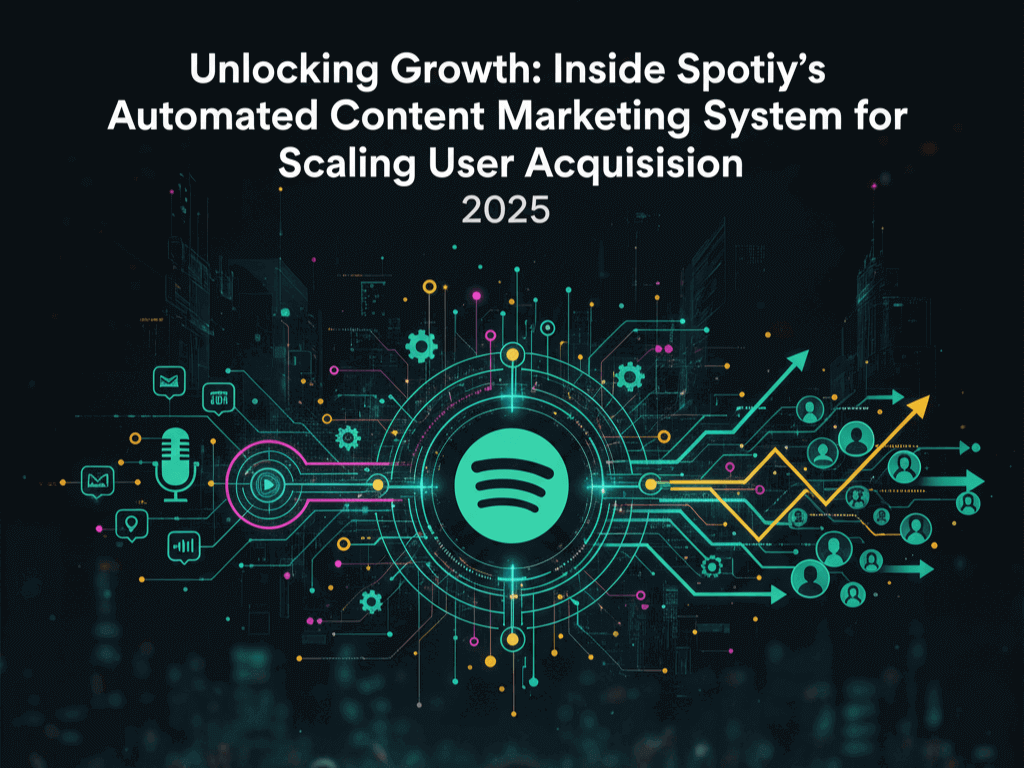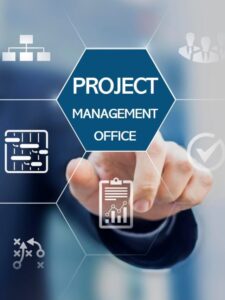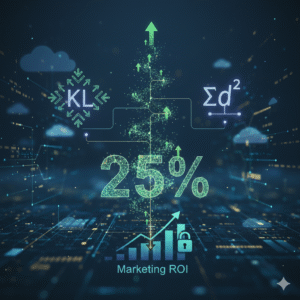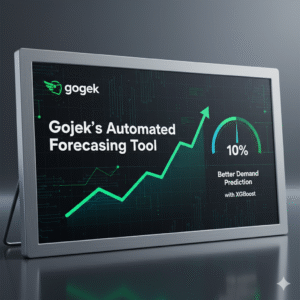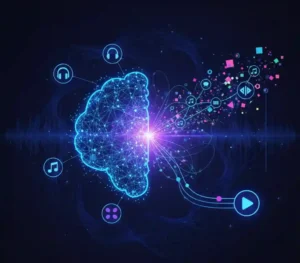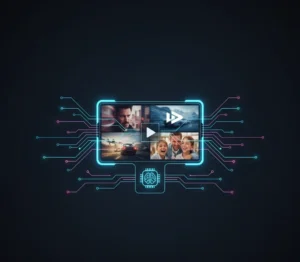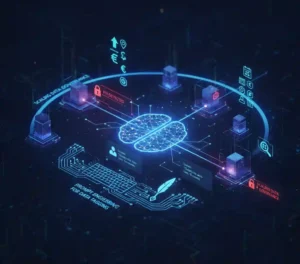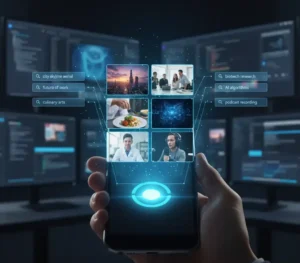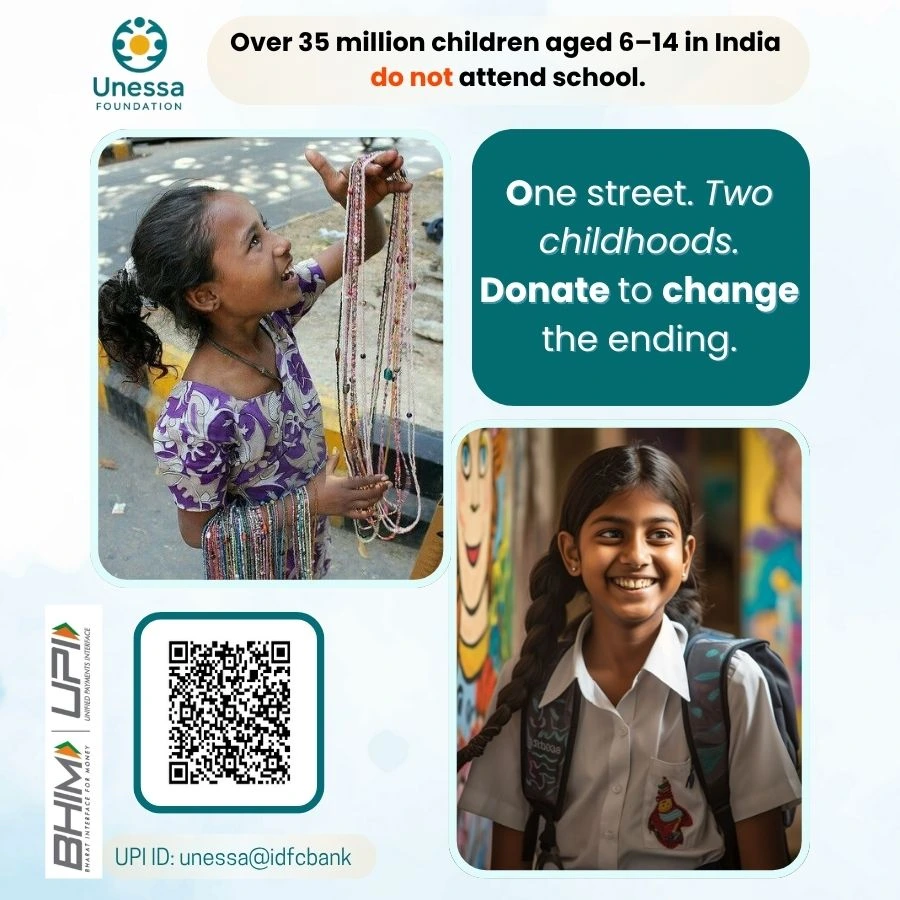Table Of Contents
- The Evolution of Spotify's Marketing: From Manual Tests to Automated Mastery
- Breaking Down the Automated Loop: Ingest, Rank, Deploy, Learn, Repeat
- Mastering Scalable Content Ad Generation: From Static Images to Dynamic Animations
- The Power of Content Ranking: Heuristics to Machine Learning Optimization
- Elevating with ML: Precision and Performance Gains
- Overcoming Technical Hurdles: Lessons from Spotify's Journey
- FAQs
- Conclusion:Why Spotify's Approach Matters for Your Marketing Strategy
The Evolution of Spotify's Marketing: From Manual Tests to Automated Mastery
Back in 2019, Spotify’s marketing team was experimenting with content-driven ads off their platform. Early manual tests showed promise—bringing in new users through engaging content like artist features and playlists. But scaling that globally? It was a nightmare. With tens of thousands of ads running on platforms like Facebook, Google, and TikTok, human oversight couldn’t catch every edge case. That’s when they pivoted to automation.
At its core, Spotify’s automated content marketing system is a closed-loop process designed for continuous improvement. It starts with ingesting data, ranks content, deploys ads, learns from performance, and repeats. This loop isn’t theoretical; it’s battle-tested, helping Spotify optimize their marketing budget efficiency with automation while leveraging their vast content library of artists and tracks.maccelator.la
Think about it: Spotify has unmatched access to music data, user preferences, and ad interaction metrics. By automating, they turned potential chaos into a streamlined machine, boosting return on ad spend (ROAS) and acquiring users at scale. Industry trends back this up—according to a 2023 Gartner report, companies using AI in marketing see up to 20% higher efficiency in user acquisition. Spotify’s approach exemplifies this, making automated content marketing for user acquisition a benchmark for others.
Breaking Down the Automated Loop: Ingest, Rank, Deploy, Learn, Repeat
Spotify’s system revolves around a five-stage loop that ensures ads are not just created but refined over time. Here’s a step-by-step breakdown of Spotify’s automated content marketing system:
- Ingest: This stage pulls in data from Spotify’s content catalog, ad platforms, and user interactions. It includes artist popularity per market, ad performance metrics like clicks and impressions, and attribution data from mobile measurement partners (MMPs). Without solid ingestion, the whole system falters—think of it as fueling the engine.
- Rank: Here, content gets prioritized. Using data-driven content marketing at scale, the system evaluates artists and templates based on factors like local popularity and past performance. This preranking is crucial because ad platforms’ algorithms struggle with unlimited options.
- Deploy: Ads are generated and pushed to channels. Spotify’s scalable content ad generation handles hundreds of variations—aspect ratios, languages, and styles—all automated.
- Learn: Post-deployment, the system analyzes results. Metrics like cost per registration (CPR) and click-through rates (CTR) feed back in, refining future ranks.
- Repeat: The loop cycles daily, adapting to market changes.
This structure allowed Spotify to handle global scale. For instance, in one A/B test, their machine learning model outperformed heuristics by delivering 4% to 14% cheaper CPR across regions, thanks to 11-12% higher CTRs.
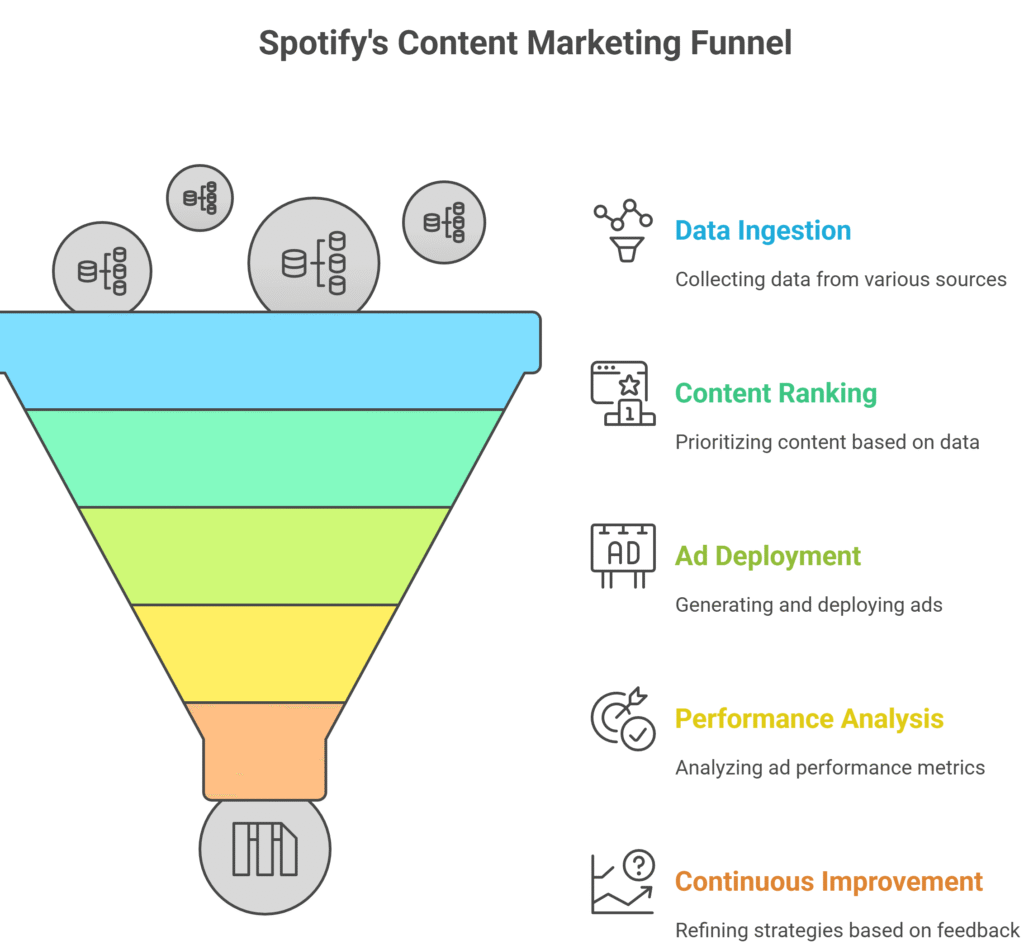
Mastering Scalable Content Ad Generation: From Static Images to Dynamic Animations
Generating ads at scale was a major hurdle. Spotify needed to create thousands of assets quickly, covering various formats and regions. Early on, they used a Java-based service for basic static templates, layering metadata like artist cover art with simple styling.
But static wasn’t enough—motion engages users better, especially on mobile. They explored tools like Lottie and Blender but settled on Adobe After Effects for its familiarity and templating power. The catch? After Effects is desktop-based, not cloud-friendly. Enter nexrender, an open-source extension that enabled batch rendering in the cloud.
With this, Spotify’s automated creative generation in digital marketing took off. Designers create templates, and the system renders animations, handling complexities like right-to-left languages. The result? Ads that pop, tailored for Gen Z in EMEA or millennials in APAC, all while keeping costs down.
A practical tip: If you’re building something similar, start with modular templates. Spotify’s shift from hardcoded to flexible ones highlights how automated tools can free creatives to focus on innovation rather than repetition.
The Power of Content Ranking: Heuristics to Machine Learning Optimization
Content ranking is where Spotify’s system shines, using machine learning in marketing automation to select the best artists and templates. Why rank? Ad platforms optimize small sets well, but Spotify deals with hundreds of thousands of possibilities. Preranking ensures only top performers get deployed.
The Heuristic Approach: A Solid Starting Point
Initially, Spotify used a heuristic blending three factors:
- Popularity: Drawing from their catalog to select top artists per market.
- Share of Registrations: A quality score based on how many sign-ups an artist drives.
- Diversity: Using artist similarity graphs to avoid overlap and explore new options.
This weighted equally (one-third each) and allowed controlled experimentation. It worked, but lacked nuance.
Elevating with ML: Precision and Performance Gains
Enter machine learning optimization for ad campaigns. Spotify switched to an XGBoost model via Kubeflow, training on rich features: campaign metadata (market, OS, template theme), artist data, and ad metrics over a lookback window.
The model predicts relative metrics like registration percentage and relative CPR ratio—avoiding absolute values skewed by market fluctuations. In tests, it netted 9% more monthly active users (MAUs) than the heuristic. Why? Richer data and adaptability.engineering.atSpotify.com
For premium ads, it forecasts subscription percentage and cost per subscription (CPS) ratio. This content ranking algorithm for marketing automation proved its worth in A/B tests, slashing CPR by up to 14%.
Case study: In two regions, ML-driven ads boosted CTR by 12%, directly tying to better user acquisition. Trends show ML in marketing growing—Forrester predicts 95% of enterprises will use it by 2025 for personalization.
Overcoming Technical Hurdles: Lessons from Spotify's Journey
No system is without bumps. Spotify faced challenges that offer valuable takeaways for anyone in marketing automation.
- Asset Orchestration: Shifting to async rendering required scaling workers dynamically. Takeaway: Build modular systems to adapt to changes without overhauls.
- API Dependencies: Outages in platforms like Facebook disrupted data pipelines. Takeaway: Have backups, like reusing prior rankings, to maintain flow.
- IDFA Changes: Apple’s 2021 privacy update limited user-level data, but Spotify’s aggregated approach weathered it. Takeaway: Anticipate industry shifts through offline analyses.
- MMP Migration: Switching from Adjust to Branch needed pipeline updates. Takeaway: Verify performance post-change to ensure seamless transitions.
- Artist Diversity in ML: Encoding group diversity was tricky. Takeaway: Iterate from simple heuristics to complex ML, embracing evolution.
These insights underscore how combining creative templates and ML for better ad performance requires resilience. Spotify’s system not only survived but thrived, automating the full cycle.
What is Spotify’s automated content marketing system?
It’s a data-driven loop that ingests metrics, ranks content using ML, generates and deploys ads, learns from results, and iterates for efficient user acquisition.
What are the key components of Spotify’s marketing automation process?
Core elements include data ingestion from APIs and catalogs, content ranking via heuristics or ML, scalable ad generation with tools like nexrender, and performance learning.
What role does machine learning play in Spotify’s content ad generation?
ML ranks artists and templates by predicting metrics like registration share, optimizing selections for higher CTR and lower costs.
How does Spotify automate content marketing for global campaigns?
By using a five-stage loop with automated tools for ingestion, ranking, deployment, and learning, handling thousands of ads across platforms.
How does machine learning improve ad creative selection on Spotify?
It trains on features like artist popularity and campaign metadata to predict performance, outperforming manual methods.
Can automated content marketing increase user acquisition effectively?
Absolutely—Spotify’s system proves it with measurable gains in MAUs and CTR.
Should marketers use machine learning for content ad optimization?
Yes, if scaling is key; it adds precision beyond heuristics, as seen in Spotify’s 12% CTR uplift.
Is Spotify’s automated marketing system scalable for all campaign sizes?
It handles tens of thousands of ads globally, making it ideal for large-scale but adaptable for smaller ones.
FAQs
Conclusion:
Why Spotify's Approach Matters for Your Marketing Strategy
Spotify’s automated content marketing system isn’t just a tech feat—it’s a blueprint for growth. By merging machine learning in marketing automation with creative scalability, they acquired users efficiently while keeping ads fresh and relevant. Whether you’re a marketer eyeing budget savings or a tech enthusiast curious about ML applications, this system shows what’s possible.
Ready to automate? Start small: Audit your data pipelines, experiment with templates, and layer in ML. The payoff? Like Spotify, you could see transformative results in user acquisition. Share your thoughts—what’s your biggest marketing challenge?Visit CareerSwami For More Learning.

